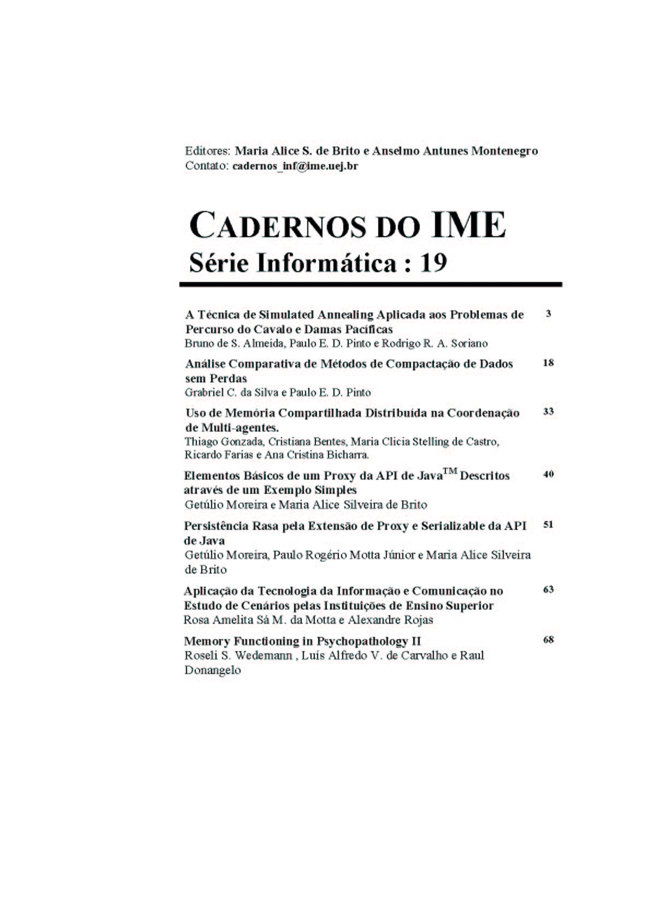Memory Functioning in Psychopathology II
Resumo
Abstract. In an earlier paper [17], we described the mental pathology known as neurosis in terms of its relation to memory function. We proposed, based on a neural network model, that neurotic behavior may be understood as an associative memory process in the brain, and that the symbolic associative process involved in psychoanalytic working-through can be mapped onto a corresponding process of reconfiguration of the network. As a first approximation, memory was modeled by a Boltzmann Machine represented by a complete graph. However, it is known that brain neuronal topology is selectively structured. In this paper, we further develop the memory model, by including some known microscopic mechanisms that control synaptic properties, showing that the network self organizes to a hierarchical, clustered structure. The model is illustrated through a computer simulation, where we show some mathematical properties of the resulting complex network.Downloads
Publicado
2013-06-24
Como Citar
S. Wedemann, R., de Carvalho, L. A. V., & Donangelo, R. (2013). Memory Functioning in Psychopathology II. Cadernos Do IME - Série Informática, 19, 68–72. Recuperado de https://www.e-publicacoes.uerj.br/cadinf/article/view/6579
Edição
Seção
Artigos

